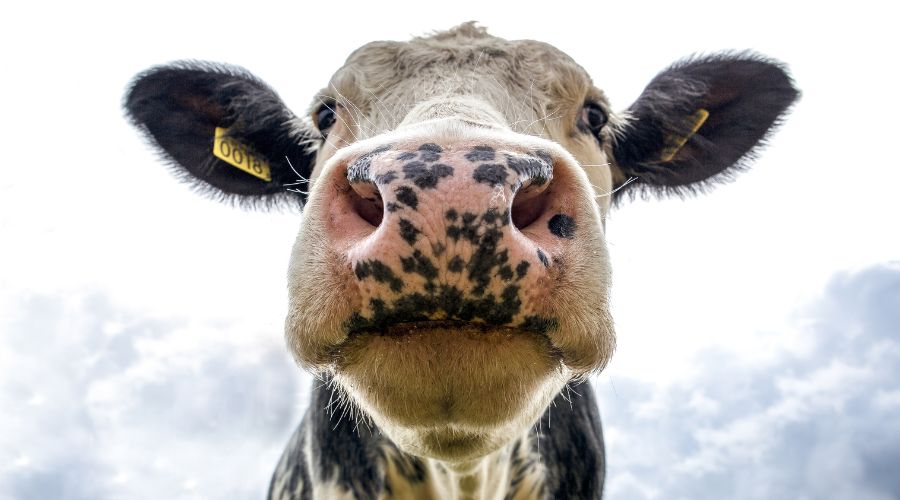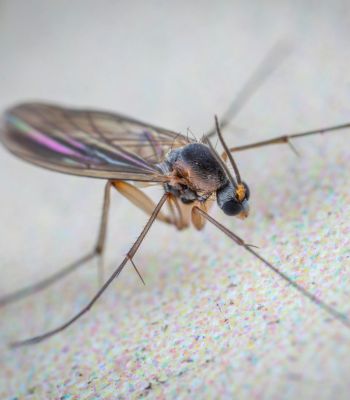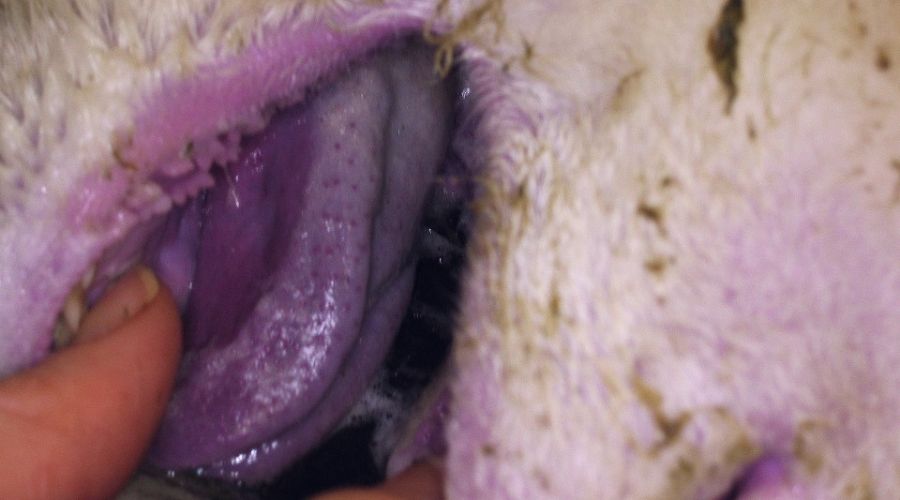Farmers warned to watch out for bluetongue signs during high-risk season
7th May 2024
Farmers have been urged to look out for signs of bluetongue as the period of increased risk has begun.

The latest risk assessment of bluetongue virus entering Great Britain during 2024 has been published by the Animal and Plant Health Agency (APHA) today, 7th May, following an outbreak in England last year.
Bluetongue is primarily transmitted by midge bites and affects cattle, goats, sheep and camelids such as llamas.
The virus does not affect people or food safety, but outbreaks can result in prolonged animal movement and trade restrictions.
APHA confirm there is a very high probability of a new introduction of bluetongue virus serotype 3 (BTV-3) into livestock in Great Britain through infected biting midges being blown over from northern Europe.

Biting midges are most active between April and November and the timing of a potential incursion will depend on the temperature and wind patterns.
Due to their proximity to areas in Northern Europe, where BTV-3 is actively being transmitted by the biting midge population and wind patterns, counties along the south and east coasts of England, including Norfolk, Suffolk, Essex, Kent, and Sussex, are considered most likely to be impacted.
The impact of the virus on susceptible animals can vary. Some livestock show no clinical signs or effects at all; for others, it can cause productivity issues such as reduced milk yield or reproductive losses, while in the most severe cases, it can be fatal for infected animals.
Preventing the disease
Wales’ Chief Veterinary Officer, Dr Richard Irvine, advised that farmers can help prevent the disease by:
- responsibly sourcing livestock
- practicing good biosecurity on their premises
- remaining vigilant

Dr Irvine said that keepers considering importing animals or biological products, for example, germinal products from BTV-affected countries or out of disease control zones, should consult their vet to check if this is permitted and be aware of the risks of doing so. This should always be done before deciding to import or move animals.
All businesses should have a contingency plan for both responding to disease outbreaks on their premises and if they might be in a disease control zone.
Contingency plans should include details of where animals are normally slaughtered to check that abattoir is designated.
Dr Irvine added: “As we enter this period where animals are more at risk from bluetongue from midges, I would urge all keepers to take action now to protect their herds and flocks to keep disease out, be aware of how to spot bluetongue, and report any suspected cases immediately”.
Signs of bluetongue
Livestock farmers have been warned to keep a close watch for and report any suspicion of bluetongue in their animals.
Here are the signs to watch out for:
In sheep
Sheep are more likely to show obvious clinical signs of bluetongue than cattle if they become infected with bluetongue virus. Signs of bluetongue in sheep include:
- ulcers or sores in the mouth and nose
- discharge from the eyes or nose and drooling from mouth
- swelling of the lips, tongue, head and neck and the coronary band (where the skin of the leg meets the horn of the foot)
In lambs
Lambs can become infected with bluetongue virus before birth if the dam is infected while pregnant. Signs of infection include:
- lambs born small, weak, deformed or blind
- death of lambs within a few days of birth
- stillbirths
In cattle
Signs of bluetongue in cattle include:
- lethargy
- crusty erosions around the nostrils and muzzle
- redness of the mouth, eyes, nose
- reddening of the skin above the hoof
- nasal discharge
- reddening and erosions on the teats
- fever
- milk drop
- not eating
- abortion, foetal deformities and stillbirths
Adult cattle may be infectious for several weeks while showing little or no sign of disease. They are often the preferred host for biting midges (the vector of bluetongue virus).

In calves
Calves can become infected with bluetongue virus before birth if the mother is infected while pregnant. Signs of infection include:
- calves born small, weak, deformed or blind
- death of calves within a few days of birth
- stillbirths
Farmers should immediately contact Animal and Plant Health Agency (APHA) office on 0300 303 8268 if they suspect bluetongue in their animals.
Further information and resources on the current bluetongue situation are also available on the Ruminant Health and Welfare website.
Find out more information on the signs of bluetongue here.
Read more livestock news.
